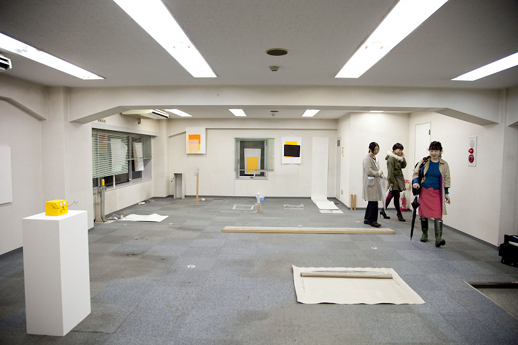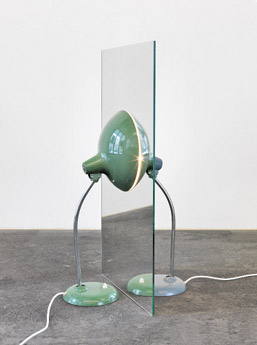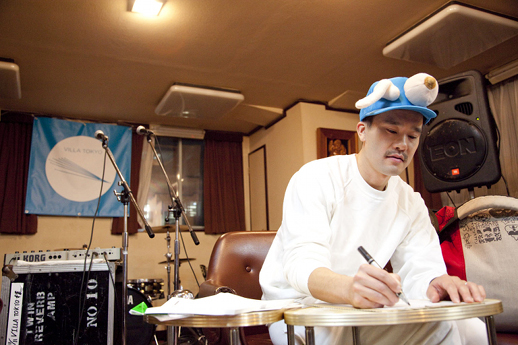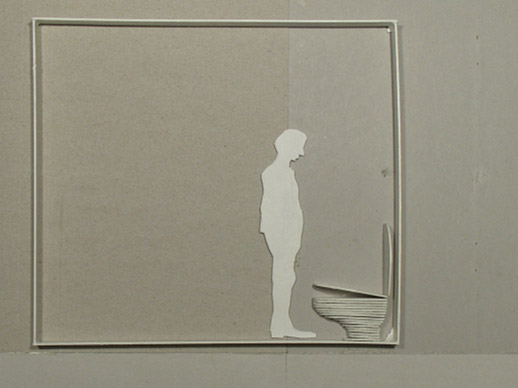Villa Tokyo: Europe Comes to Town
Friday night (11/11/11) was the launch for a one-week event that has brought local and overseas galleries together to show off their best wares — but this is no art fair.
Villa Tokyo is an art project that began in Warsaw, Poland, five years ago. For the first time, its founding organiser, Raster Gallery, along with a dozen other European galleries, has moved the event outside of Europe. Instead of heading to the obvious destinations such as New York or London, Villa has found a temporary home in Kyobashi, a neighbourhood in the midst of the big business district around Tokyo Station. It’s an area with a seemingly concentrated amount of empty office buildings — a handful of which are operating right now as temporary art spaces.

Various vacant offices and apartments are filled with a grand display of current and upcoming names in contemporary art. Aneta Grzeszykowska (represented by Raster, Warsaw) treats the human body as a medium. A mesmerising dance video, ‘Bolimorfia’ (2008/2010), occupies the basement level of the Villa’s main building. Piotr Bosacki (Stereo, Poznan) also seems occupied by bodies and their functions, in a rather disturbing but also funny animation, ‘Kompletne Bzdury’ (2011).

Navid Nuur’s artworks were not represented by any gallery in particular, but were a valuable addition to a very strong display of conceptual artworks across the entire Villa. Works such as ‘Inside the Void of Universal Friction’ (2005-2008) use the travelling life of a contemporary artist as its basis.
Dan Rees (Tanya Leighton, Berlin) uses Richard Hamilton’s famous minimalist cover of The Beatles’ ‘White’ album as the base for his renditions of favourite paintings. The series is titled, ‘A Good Idea Is A Good Idea’ (2011), and why bother arguing with that?
From the Japanese galleries, there’s a good collection of names such as Koki Tanaka (Aoyama Meguro), Mono-ha artist Kishio Suga (Tomio Koyama), and Chim Pom (Mujin-to Productions). Takahiro Iwasaki (Arataniurano), whose miniscule sculptures were last seen in the Yokohama Triennale, has occupied the kitchen of one of the gallery spaces.

The Villa projects emphasise the non-commercial functions of a gallery. First and foremost, the project believes in contemporary galleries as places of communication, particularly as “a point of first contact with new phenomena… a site of experimenting, creating new strategies for art and conquering new territories and audiences.” Galleries should not be treated simply as a physical space; they are made up of the right combination of people. These people are of course the art dealers and artists, but there also has to be connections with critics and curators, collectors and art lovers, students, friends of artists and even friends of friends. By organising temporary exhibitions and occupying new urban spaces, Villa Tokyo aims to nurture these kinds of connections.

Given the shortage of artist-run spaces and non-commercial ventures in Tokyo’s current art landscape, these connections are essential to the continuing relevance of local galleries. Villa Tokyo includes some of Tokyo’s most supportive places for young and emerging artists — Taka Ishii Gallery, Tomio Koyama Gallery, and the New Tokyo Contemporaries gallerists group. This is not representative of all open-minded galleries in Tokyo, but it certainly shows proof that there are some who are willing to invest in connections rather than just profit.
Emily Wakeling
Emily Wakeling



